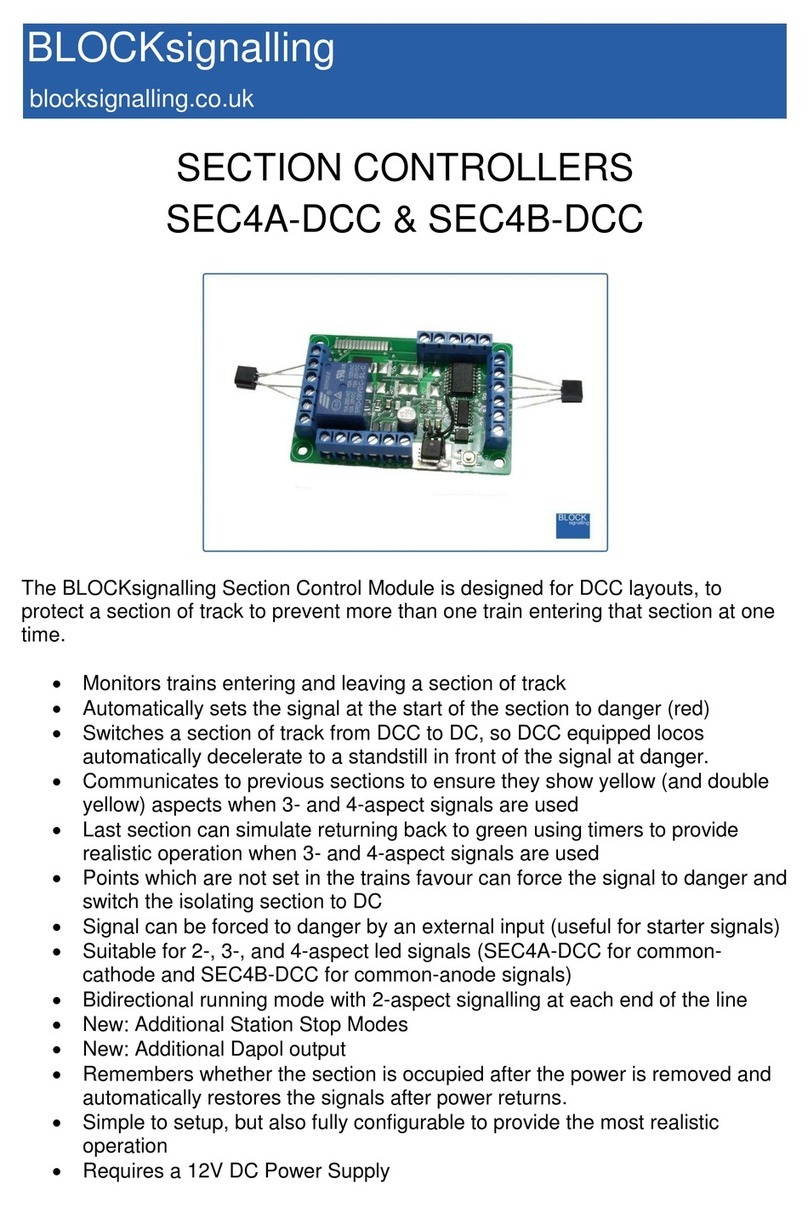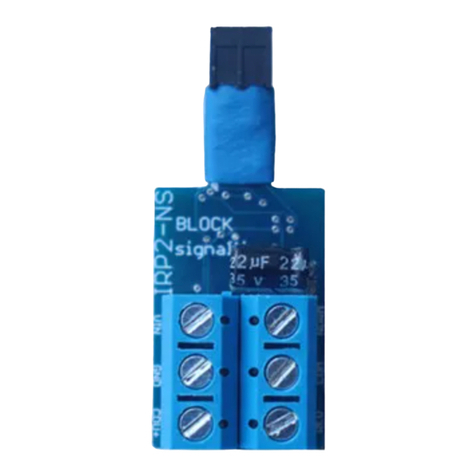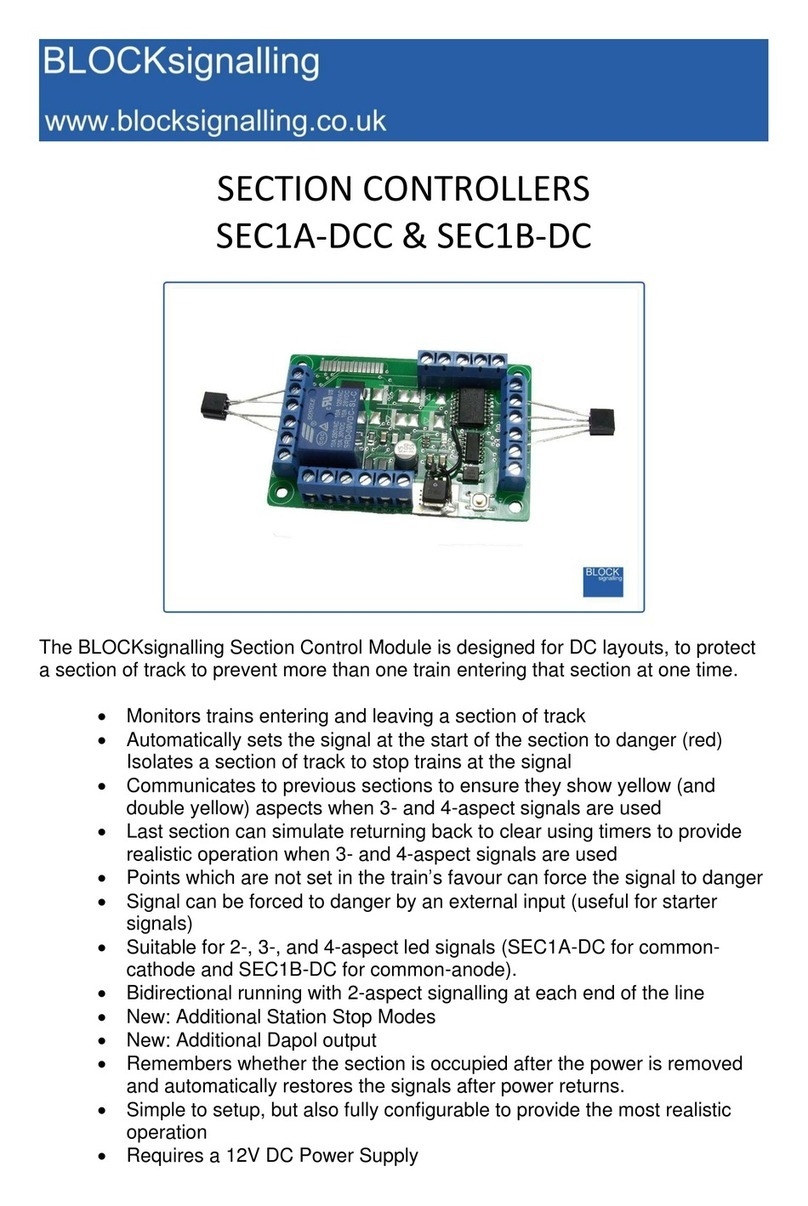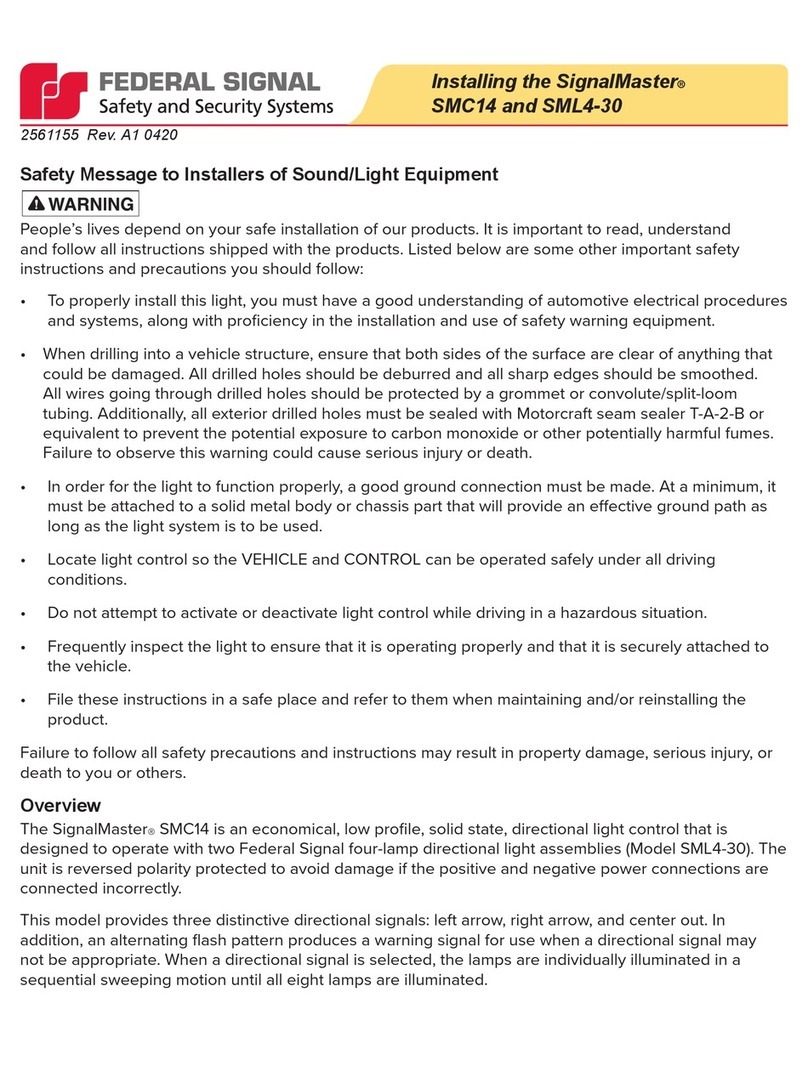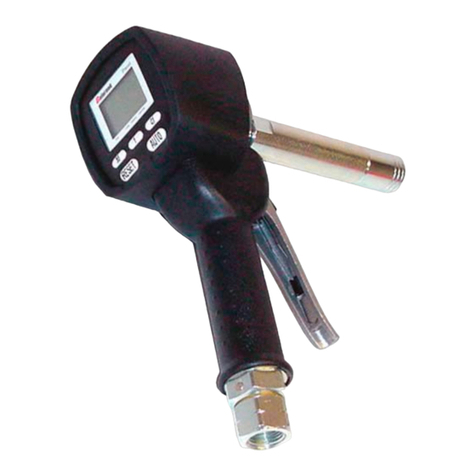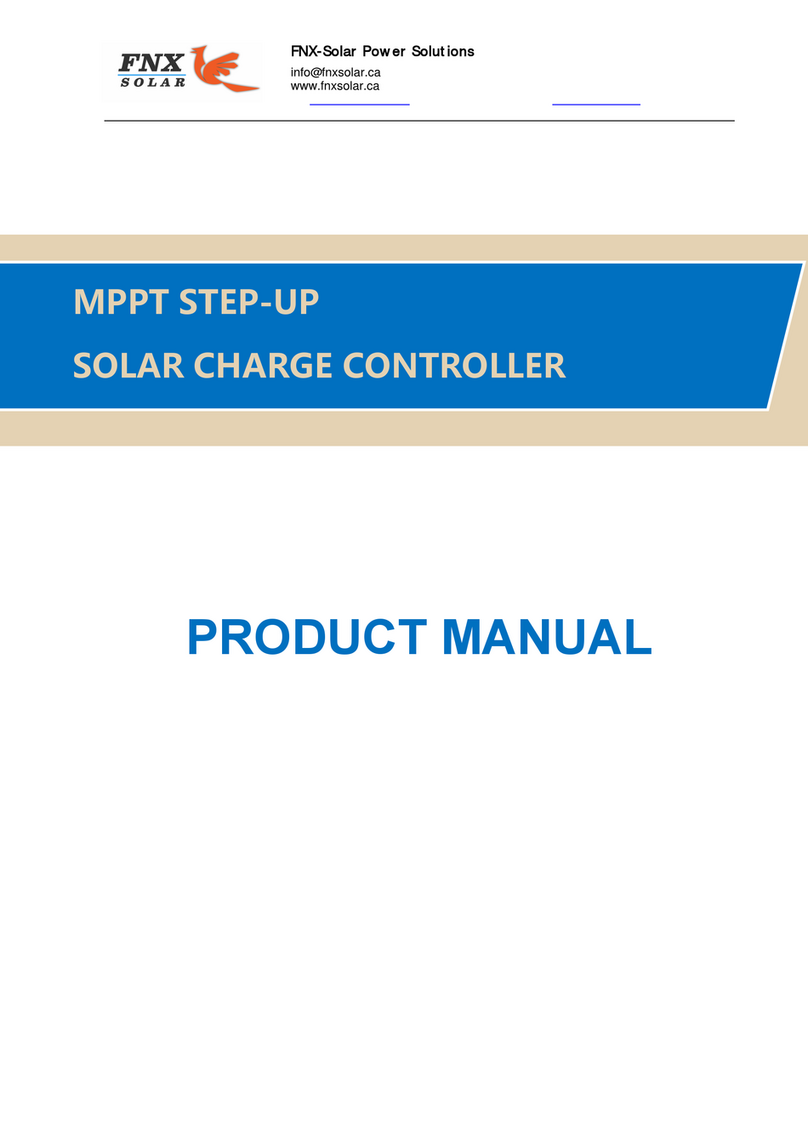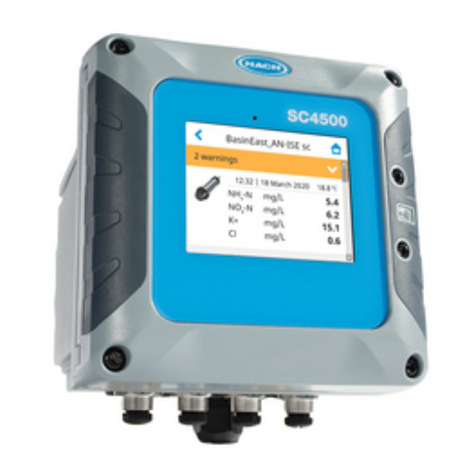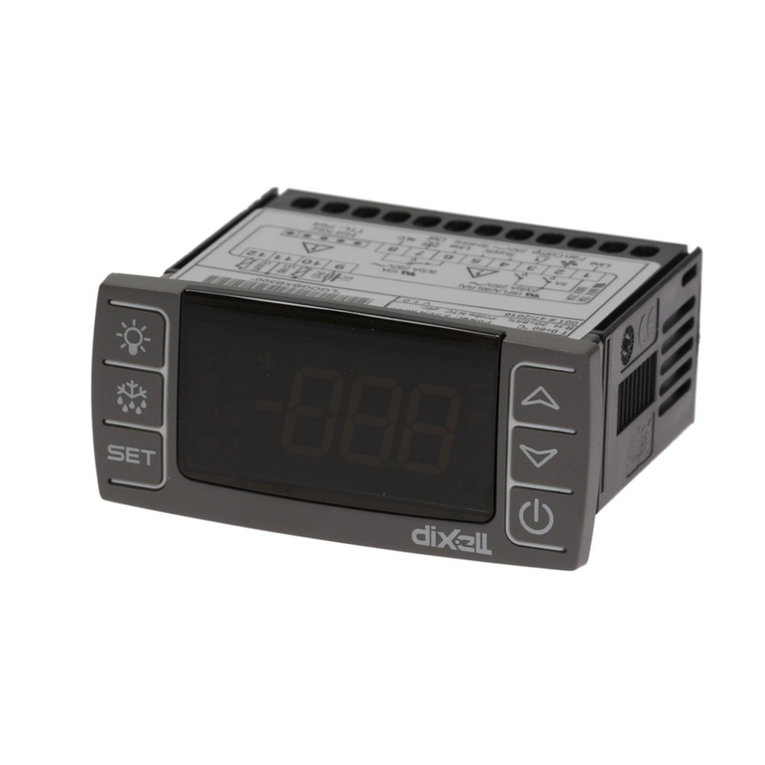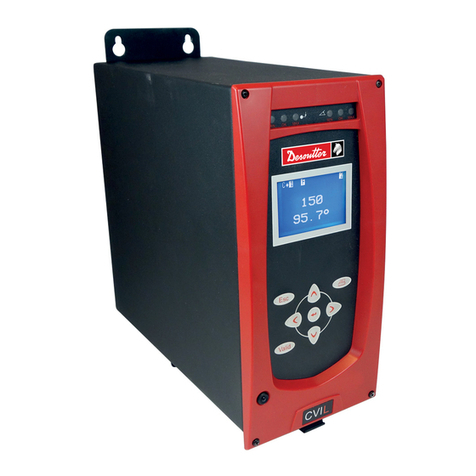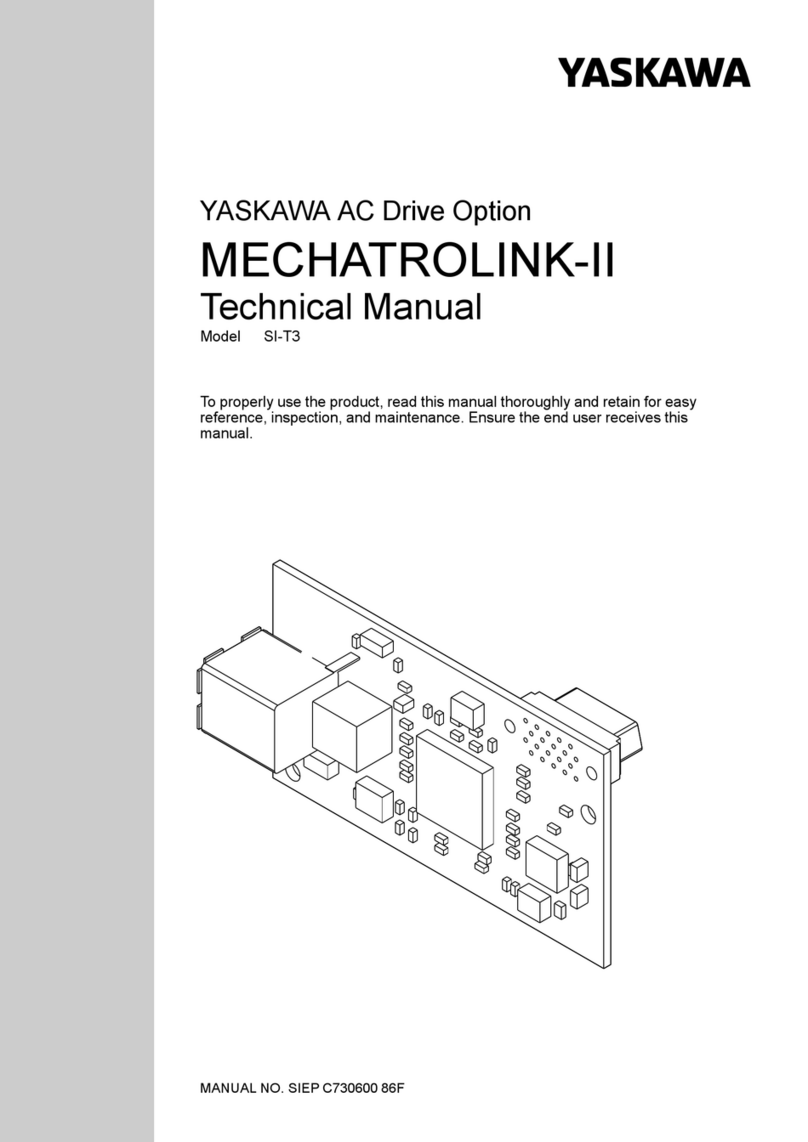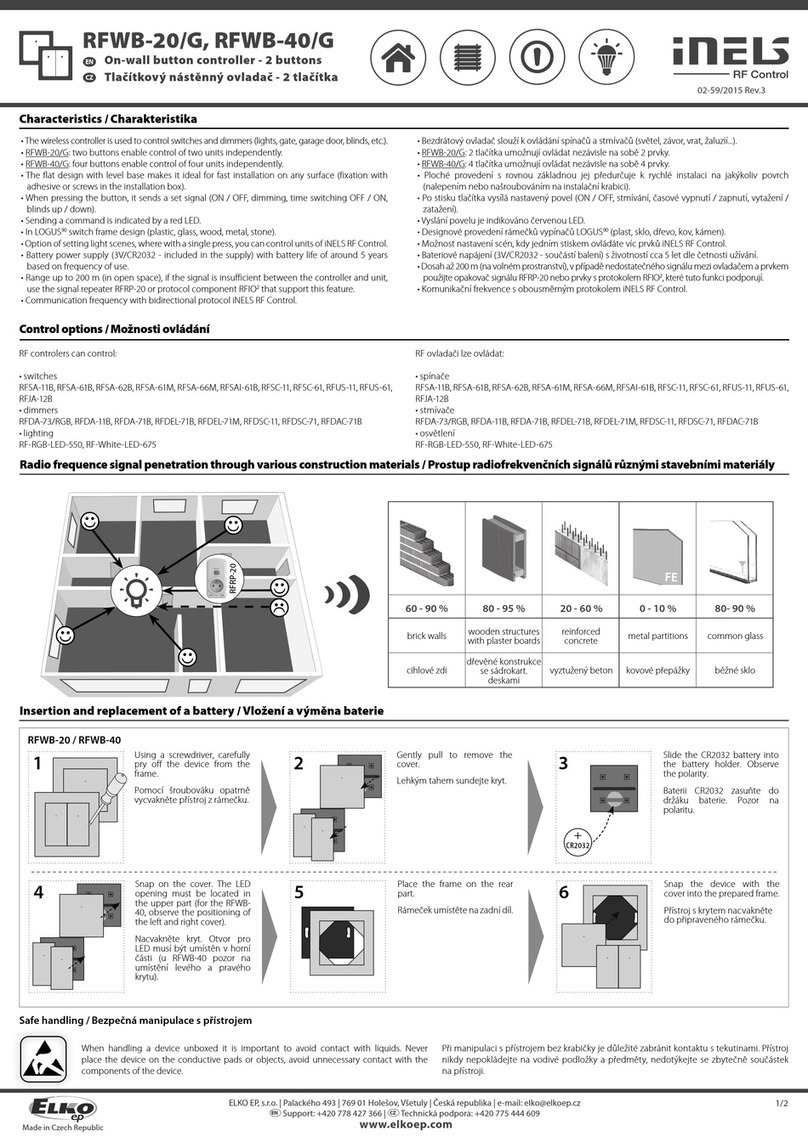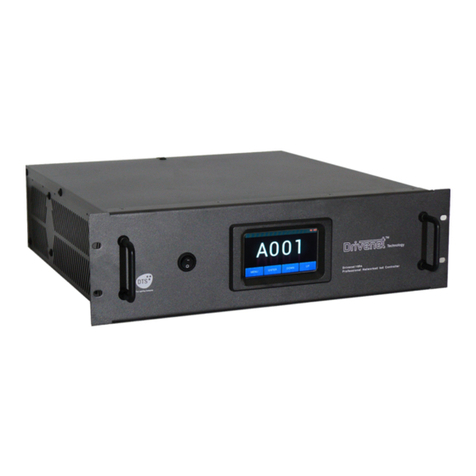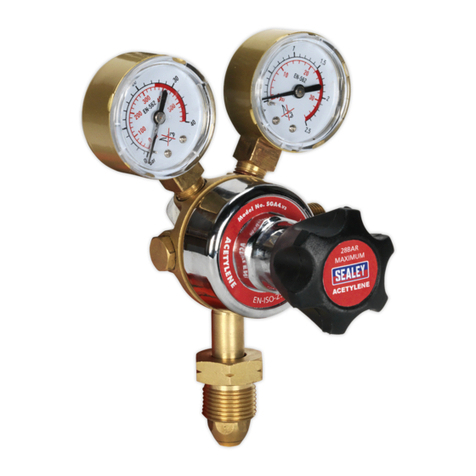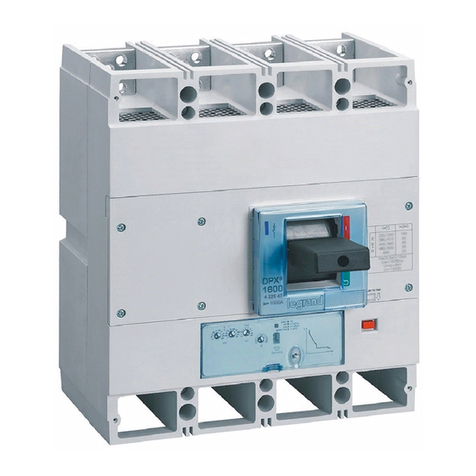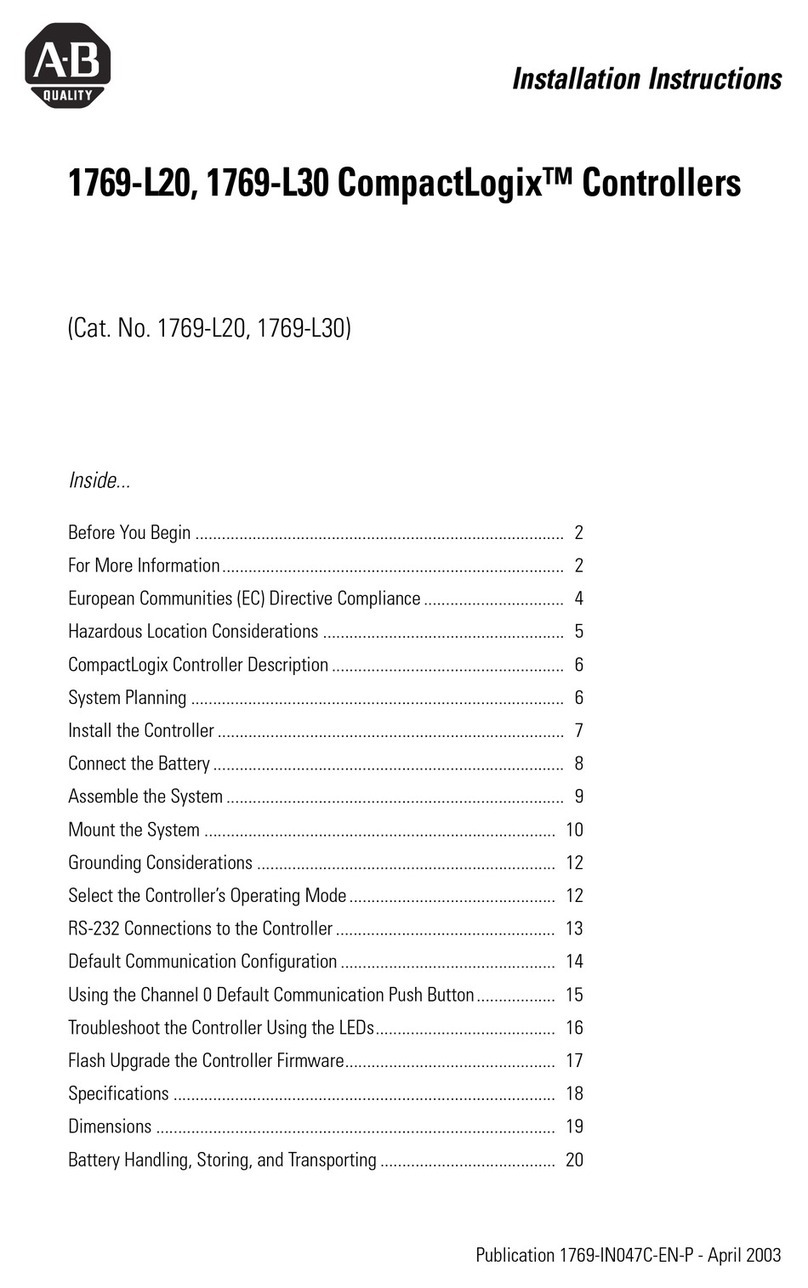BLOCKsignalling ASP1A User manual

ASPECT CONTROLLER ASP1A
(FOR COMMON CATHODE LED SIGNALS)
Uses an infra-red sensor mounted below the track to detect trains passing above
When a train is detected, the module triggers the signal to switch to red
Signal automatically switches back to green (through yellow and double-yellow if
appropriate)
Flexible programming options to suit different signals and to allow adjustment of
timings to suit
Designed for signals which need +12V to be switched to them to light their leds
(common cathode)
Realistic fading between aspects.
Yellow and Double-Yellow stages will change to red if another train passes.
Building on the success of our infra-red train detectors, this module boasts a wider
range of input voltages, smooth fading between aspects, and the ability to be
triggered from yellow or double-yellow stages back to red.
This Signal Controller detects trains by bouncing invisible Infra-Red (IR) light off the
underside of the rolling stock, and detecting the light reflected back. Once triggered
by the train, the module runs built-programs to simulate the operation of 2-, 3- or 4-
aspect signals.

Page 2 of 18
BLOCKsignalling www.blocksignalling.co.uk
The signal normally shows green. When the train passes the detector, the signal
switches to red. Once the train has fully cleared the detector, the module switches
the signal back to green (via yellow and double-yellow if appropriate).
The duration of the red, yellow and double-yellow stages can be adjusted, as can the
time the sensor needs to be cleared before initiating the sequence returning to green
and the sensitivity of the detection. Adjusting the time the sensor needs to be cleared
can be useful to prevent incorrect detection of the train having passed due to the
small gaps between the rolling stock.
This controller is designed for connection to signals which have a common-cathode
(common negative) connection. This is normally the case for UK manufactured
signals. European and American signals generally use a common-anode
connection, which can be powered from our identically featured ASP2A.
Features
No calibration required –works out of the box.
No modifications required to rolling stock.
Not affected by light or dark, or changes in light level.
Designed and manufactured in the UK.
Power Supply
The module operates from a 12V DC power supply. With the signals operating, the
current consumption is approximately 0.025A (25mA)
Please double check all wiring before applying power, as incorrect wiring can
damage the unit.

Page 3 of 18
BLOCKsignalling www.blocksignalling.co.uk
Programming
As supplied, the module is programmed for 4-aspect signals. If you are using 3- or
2-aspect signals, then it will be necessary to reprogram the module.
Programming for the particular application can be completed before or after testing
the wiring, and also before or after completing the installation.
This is performed by attaching the sensor inserting a link between the A and K
terminals and holding down the Push Button when switching on the power (it
will also work if the Infra-Red sensor has been connected to the A and K terminals).
For each program there are two values to be stored (see late for details of the
options available).
The red led on the PCB flashes at 1 second intervals. When the required number of
flashes is seen (see later for the list of possible choices) the button is released to
store the first value. At this point the led comes on for five seconds to confirm the
value is stored.
The led then starts flashing again, and this time the button needs to be pressed to
store the second value.
Once both values have been are entered, the led flashes 10 times rapidly, and the
module starts operating.
Each value entered can be up to 255 flashes. If more are seen, or the programming
is aborted by switching off, then the programming must be repeated.
BLOCK
signalling
Detector
-+
POWER
SUPPLY

Page 4 of 18
BLOCKsignalling www.blocksignalling.co.uk
Factory Reset
To reset the module back to factory settings, switch off the power to the module and
hold down the Push Button. Apply the power and continue holding the push button
until 1 flash of the led is seen. At this point, release the button. You will see a long
flash of five seconds.
The led will begin flashing again. When you have seen 1 flash press the button. You
will see a long flash of five seconds and then 10 rapid flashes. The reset procedure
is then complete and the module will restart with factory settings, and run the 4-
aspect signal mode. If you make a mistake programming, simply repeat the process.
Led Connection
When using leds it is important to connect them the right way around.
The negative lead (cathode) is identified by a flat on the side of the led body, and by
having a shorter lead.

Page 5 of 18
BLOCKsignalling www.blocksignalling.co.uk
Testing the Infra-red Detection
An Infra-Red source and Infra-Red detector are moulded into a single 5mm x 6.5mm
package that can be located below the track bed to reflect light off rolling stock.
Identify the leads from the diagram and connect to the terminals marked A, K, C and
E on the PCB. The wires can be extended using small chocolate block and extra
lengths of cable if required (not supplied).

Page 6 of 18
BLOCKsignalling www.blocksignalling.co.uk
Sensitivity Setting
The module is supplied with the sensitivity pre-set to suit most installations and
should not need adjustment.
In locations such as tunnels, or when the module is not being used under the track
bed, then it may be desirable to adjust the detection threshold.
The sensitivity is factory set to 5, and can be adjusted from 1 to 10 (with 1 being the
most sensitive and 10 being the least sensitive).
To change the sensitivity, switch off the power to the module and hold down the
Push Button. Apply the power and continue holding the Push Button until 9 flashes
of the led are seen. At this point, release the button. You will see a long flash of five
seconds.
The led will begin flashing again. When you have reached the desired number of
flashes to set the new sensitivity, press the button. You will see a long flash of five
seconds and then 10 rapid flashes. The programming is then complete and the
module will restart. If you make a mistake programming, simply repeat the process.
Performing a factory reset will reset the sensitivity setting back to 5.

Page 7 of 18
BLOCKsignalling www.blocksignalling.co.uk
Installation
The Infra-Red sensor is normally installed below the track-bed.
The detection range of the unit is up to approximately 25mm from the face of the
package when the default sensitivity is set (for dark surfaces with low levels of
reflectivity).
The detector can be mounted in an 8mm hole drilled through the track baseboard. If
required, the detector can be held in place using a small amount of blutack,
expanded polystyrene or similar.
The led diameter is 2.2mm, so on smaller scales the leds can still have a clear view
between the sleepers.

Page 8 of 18
BLOCKsignalling www.blocksignalling.co.uk
Connecting the Outputs
Each channel has an output, which switches to 12V to switch the output on.
There are resistors built-in to the controller, so external resistors are not required. If
your signal already has resistors connected, these can remain if you wish, although
the signal may appear slightly dimmer.
Program 2 (2-Aspect Signalling)
This program simulates the operation of a two aspect signal, which is normally
showing green. The module searches for a train, and if one is detected in front of the
sensor, the signal immediately switches to red.
Whilst the sensor is covered, the signal stays at red. As the train passes over the
sensor, any gaps between the rolling stock which are shorter that the release time
programmed are ignored.
Once the train has cleared the sensor, and the release time expires, then the "red
time" timer starts. When this expires, the signal turns back to green and starts
looking for trains again.
The "release time" can be adjusted if slow moving trains cause the signal to
prematurely switch back to green before the train has cleared the sensor.
The "red time" can be adjusted to a realistic duration for a train to clear the section of
track protected by the signal.
When supplied, or following a factory reset, the module will operate in 4-aspect
mode. It needs to be reprogrammed as follows.
BLOCK
signalling
RED
GREEN
CH3+
CH1+
GND
+
-
Led Connections
+
-
Detector
-+
POWER
SUPPLY

Page 9 of 18
BLOCKsignalling www.blocksignalling.co.uk
To select this program, switch off the power to the module and hold down the Push
Button. Apply the power and continue holding the push button until 2 flashes are
seen. At this point, release the button. You will see a long flash of two seconds and
then the led will begin flashing again.
When 2 flashes have been seen press and hold the button. You will see a long flash
of five seconds and then 10 rapid flashes. The button can now be released and the
programming is complete. The module will start running the program. If you make a
mistake programming, simply repeat the process.
Program 3 (3-Aspect Signalling)
This program simulates the operation of a three aspect signal, which is normally
showing green. The module searches for a train, and if one is detected in front of the
sensor, the signal immediately switches to red.
Whilst the sensor is covered, the signal stays at red. As the train passes over the
sensor, any gaps between the rolling stock which are shorter that the release time
programmed are ignored.
Once the train has cleared the sensor, and the release time expires, then the "red
time" timer starts. When this expires, the signal switches to amber and the "yellow
timer" starts.
When this expires, the signal switches back to green and starts looking for trains
again.
The "release time" can be adjusted if slow moving trains cause the signal to
prematurely switch back to green before the train has cleared the sensor.
BLOCK
signalling
RED
GREEN
YELLOW
CH3+
CH2+
CH1+
GND
+
-
Led Connections
+
-
Detector
-+
POWER
SUPPLY

Page 10 of 18
BLOCKsignalling www.blocksignalling.co.uk
The "red time" can be adjusted to a realistic duration for a train to clear the section of
track protected by the signal.
The "yelllow time" can be adjusted to a realistic duration for the scale.
When supplied, or following a factory reset, the module will operate in 4-aspect
mode. It needs to be reprogrammed as follows.
To select this program, switch off the power to the module and hold down the Push
Button. Apply the power and continue holding the push button until 2 flashes are
seen. At this point, release the button. You will see a long flash of two seconds and
then the led will begin flashing again.
When 3 flashes have been seen press and hold the button. You will see a long flash
of five seconds and then 10 rapid flashes. The button can now be released and the
programming is complete. The module will start running the program. If you make a
mistake programming, simply repeat the process.
Program 4 (4-Aspect Signalling)
This program simulates the operation of a four aspect signal, which is normally
showing green. The module searches for a train, and if one is detected in front of the
sensor, the signal immediately switches to red.
Whilst the sensor is covered, the signal stays at red. As the train passes over the
sensor, any gaps between the rolling stock which are shorter that the release time
programmed are ignored.
BLOCK
signalling
RED
GREEN
YELLOW
YELLOW
CH4+
CH3+
CH2+
CH1+
GND
+
-
Led Connections
+
-
Detector
-+
POWER
SUPPLY

Page 11 of 18
BLOCKsignalling www.blocksignalling.co.uk
Once the train has cleared the sensor, and the release time expires, then the "red
time" timer starts. When this expires, the signal switches to yellow and the "yellow
timer" starts.
When this expires, the signal switches to double yellow and the "double yellow timer"
starts. When this expires, the signal switches back to green and starts looking for
trains again.
The "release time" can be adjusted if slow moving trains cause the signal to
prematurely switch back to green before the train has cleared the sensor.
The "red time" can be adjusted to a realistic duration for a train to clear the section of
track protected by the signal.
The "yellow time" and "double yellow time" can be adjusted to a realistic duration for
the scale.
To use this mode, the module needs to be reprogrammed as follows.
To select this program, switch off the power to the module and hold down the Push
Button. Apply the power and continue holding the push button until 2 flashes is
seen. At this point, release the button. You will see a long flash of two seconds and
then the led will begin flashing again.
When 4 flashes have been seen press and hold the button. You will see a long flash
of five seconds and then 10 rapid flashes. The button can now be released and the
programming is complete. The module will start running the program. If you make a
mistake programming, simply repeat the process.

Page 12 of 18
BLOCKsignalling www.blocksignalling.co.uk
Connecting Control Panel Leds
If you wish to show the status of any signal using separate leds on a control panel,
then these can simply be wired in series with the signal leds.
The diagram below shows two leds on a control panel, which will show the same
colour as the connected 2-aspect signal. Similar connections can be made when
using 3- and 4-aspect signals.
BLOCK
signalling
RED
GREEN
CH3+
CH1+
GND
RED
GREEN
CONTROL
PANEL LEDS
+
-
+
-
Detector
-+
POWER
SUPPLY

Page 13 of 18
BLOCKsignalling www.blocksignalling.co.uk
Example Wiring to Eckon or Berko 4-aspect Signal
The positive connection from each of the leds in an Eckon or Berko signal match the
led colour (red wire for the red led positive connection, etc).
Depending on the age of the signal, there will be one or more white wires. These
are the negative connections to the leds.
The exception is the top yellow led of a 4-aspect signal. This has a blue positive
wire and may have a black negative wire (or it may share a white negative wire with
the rest of the leds).
The following wiring diagram shows the most common wiring arrangement.
BLUE WIRE (TOP YELLOW LED +)
GREEN WIRE (GREEN LED +)
YELLOW WIRE (LOWER YELLOW LED +)
RED WIRE (RED LED +)
BLACK WIRE (TOP YELLOW LED -)
RED
GREEN
YELLOW
YELLOW
BLOCK
signalling
WHITE WIRE (S) (LED -)
Detector
-+
POWER
SUPPLY

Page 14 of 18
BLOCKsignalling www.blocksignalling.co.uk
Changing the Timing of each Phase
The individual time for each of the phases can be adjusted to suit (the default values
are shown in the programming diagram below). Once you are happy with the
operation of the train detection, you will probably want to change these to more
realistic values.
To change the Red Time:
Switch off the power for 5 seconds. Press the push button on the PCB, and switch
the power back on.
The red led on the PCB flashes at 1 second intervals. When 3 flashes have been
seen, the button is released to store the first value. At this point the led comes on for
five seconds to confirm the value is stored.
The led then starts flashing again, and this time the button needs to be pressed to
store the second value (the time you want the red led to be lit, for example 10
flashes for 10 seconds).
When the button is released, the led flashes 10 times rapidly, and the module starts
operating.
To change the Yellow Time:
Switch off the power for 5 seconds. Press the push button on the PCB, and switch
the power back on.
The red led on the PCB flashes at 1 second intervals. When 4 flashes have been
seen, the button is released to store the first value. At this point the led comes on for
five seconds to confirm the value is stored.
The led then starts flashing again, and this time the button needs to be pressed to
store the second value (the time you want the yellow led to be lit, for example 10
flashes for 10 seconds).
When the button is released, the led flashes 10 times rapidly, and the module starts
operating.
To change the Double-Yellow Time:
Switch off the power for 5 seconds. Press the push button on the PCB, and switch
the power back on.
The red led on the PCB flashes at 1 second intervals. When 5 flashes have been
seen, the button is released to store the first value. At this point the led comes on for
five seconds to confirm the value is stored.
The led then starts flashing again, and this time the button needs to be pressed to
store the second value (the time you want both yellow leds to be lit, for example 10

Page 15 of 18
BLOCKsignalling www.blocksignalling.co.uk
flashes for 10 seconds).
When the button is released, the led flashes 10 times rapidly, and the module starts
operating.
Other Programming Options
There are a number of parameters which can be adjusted if you wish to alter the
operation of the module.
Release Time
This is the time that the infra-red sensor must be continuously unobstructed for the
module to confirm the train has passed. This allows for gaps between the carriages
of variable reflectivity of the underside of the train.
The default setting is 2 seconds. A value of between 1 and 255 seconds is possible.
Lamp Fade-Down Rate
This is the rate at lamp (leds) dim down.
The default setting is 3 which represents the appearance of a filament lamp. If the
effect of an led aspect is required, then set this to 9.
Lamp Fade-Up Rate
This is the rate at lamp (leds) brighten when switched on.
The default setting is 4 which represents the appearance of a filament lamp. If the
effect of an led aspect is required, then set this to 9.
Maximum Led Brightness
The leds are normally set to operate at full brightness, with this set to 7.
This value can be reduced if the leds appear brighter than required.
Gap Between Phases
This variable set the gap between each aspect switching, to represent the operation
of relay interlock.
The default value is 2. This variable can be set from 1 to 9.

Page 16 of 18
BLOCKsignalling www.blocksignalling.co.uk
Program Flow Diagram
The diagram below shows all the programming options.
Programming is performed by inserting a link between the A and K terminals (or by
having the detector wired in place) and holding down the Push Button when
switching on the power.
The red led on the PCB flashes at 1 second intervals. When the required number of
flashes is seen (see later for the list of possible choices) the button is released to
store the first value. At this point the led comes on for five seconds to confirm the
value is stored.
The led then starts flashing again, and this time the button needs to be pressed to
store the second value.
Once the two values to be stored are entered, the led flashes 10 times rapidly, and
the module starts operating.
Most values entered can range between 1 and 255 (see below for limits). If more
are seen, or the programming is aborted by switching off, then the programming
must be repeated.

Page 17 of 18
BLOCKsignalling www.blocksignalling.co.uk
©blocksignalling.co.uk 2019

Page 18 of 18
BLOCKsignalling www.blocksignalling.co.uk
Troubleshooting
If the module is not functioning as expected, please follow these diagnostic tests.
1. The led on the module does not light. Disconnect all the connections except
the power supply and connect a link between the A and K terminals. If it now
lights, recheck the connections to the IR sensor carefully. If it still does not
light, replace your power supply with a 9V battery to check if your power
supply is causing the issue.
2. When the module is switched on, none of the signal leds light. This module
requires common-cathode signals. If yours are common anode, they will not
work with the module. We do manufacture a module for common-anode
signals.
3. The module shows a green signal for 1 second, then switches to red and
stays there. Light may be escaping from the rear of the sensor and reflecting
off adjacent material. Use black tape around the rear of the sensor to prevent
light leakage or reduce the sensitivity of the sensor by adjusting memory
setting 9.
4. With 2-aspect signals, there are times when neither is lit. The module needs
to be programmed for 2-aspect signals. If it is programmed for 3- or 4- aspect
signals, there will be times when yellow (and double yellow) indications would
be shown.
Table of contents
Other BLOCKsignalling Controllers manuals
